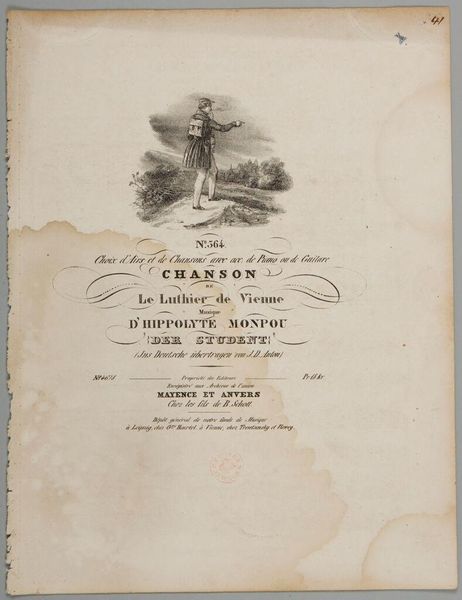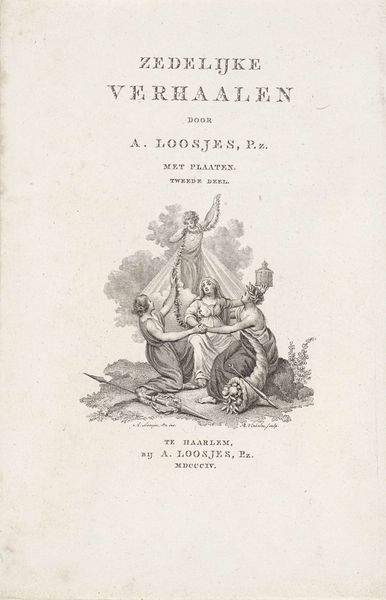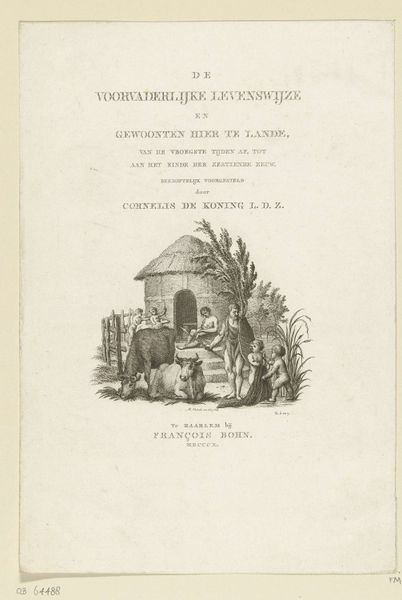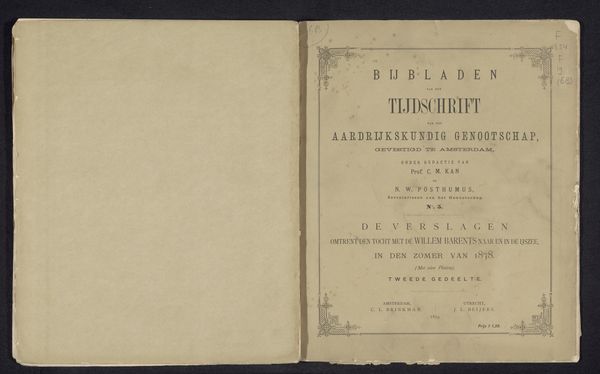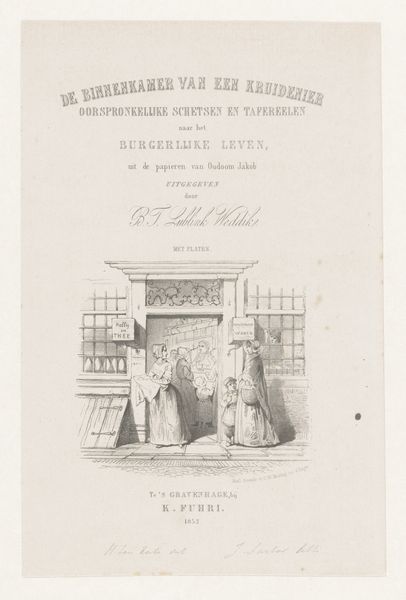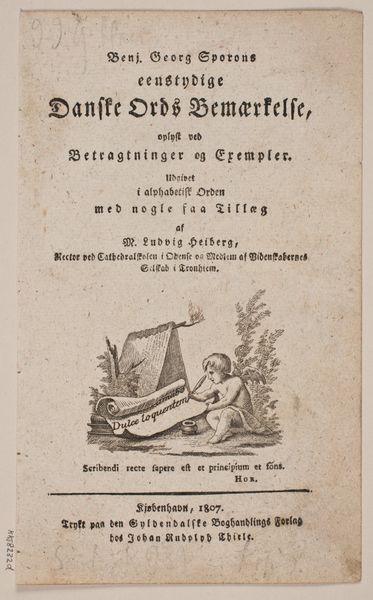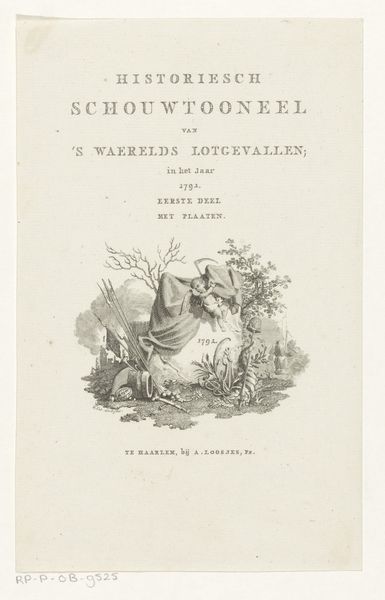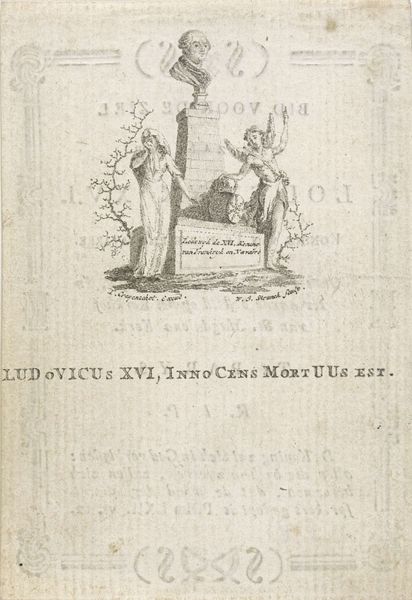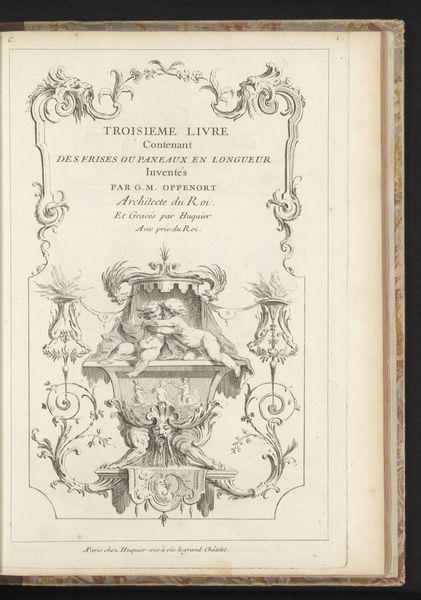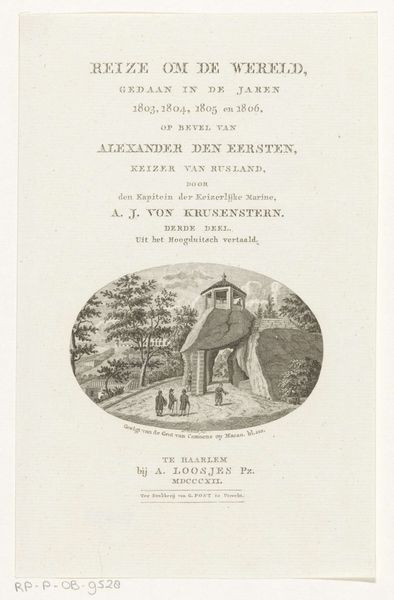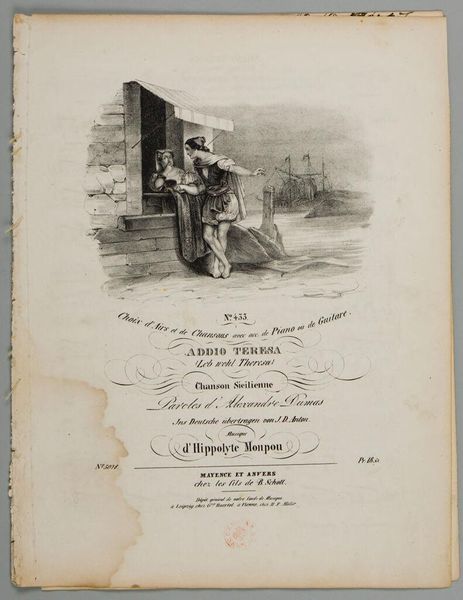
Titelpagina voor: A. Loosjes, Het leven van Hillegonda Buisman, 1825 1825
0:00
0:00
print, engraving
#
neoclassicism
# print
#
history-painting
#
engraving
Dimensions: height 203 mm, width 127 mm
Copyright: Rijks Museum: Open Domain
Curator: Looking at this engraving, what jumps out at you? Editor: It’s evocative, in a muted way. The stark contrasts, the somber yet domestic scene... it feels like a very formal remembrance. A controlled sentimentality, would you agree? Curator: Indeed. What we’re viewing is the title page for "Het Leven van Hillegonda Buisman," or "The Life of Hillegonda Buisman," published in 1825. Jacob Ernst Marcus made this engraving. Editor: Marcus. Can we contextualize this a bit? Buisman—who was she? What role did Marcus' print serve beyond simple illustration? Curator: Hillegonda Buisman was apparently the subject of this biography, authored by A. Loosjes. Looking at the engraving itself, note the arrangement of objects: an extinguished oil lamp beside books, sheet music, a ruined column emblazoned with clasped hands, even a beehive. Each, crafted by hand via engraving, communicates ideas about history, labour, family, and remembrance. Editor: The extinguished lamp— a common memento mori, marking the end of life. The broken column— a life interrupted, support removed. These symbols serve to highlight the perceived tragedy in the subject's life but it is romanticized here in a way that might occlude other historical understandings. Is Buisman afforded a position of power in her own narrative, or simply framed as an object of pity? Curator: That's a very important point. Moreover, this work, due to its production process, reflects 19th-century print culture. The relatively widespread dissemination of texts was dependent on artisans such as Marcus. Notice the fine detail, requiring incredible skill, all in service of this Neoclassical style. Editor: Yes. The labour is inherent in this piece. Each line is consciously placed to not only convey meaning, but also allude to class and labor practices involved in literary culture at that moment in history. A poignant meditation on not just a life, but on how we memorialize lives. Curator: Precisely. It encapsulates so many threads of that era – history, the print trade, family, mourning. Editor: Which hopefully, through understanding, we can unravel further.
Comments
No comments
Be the first to comment and join the conversation on the ultimate creative platform.
